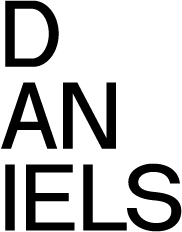
Trading Places
Image: Andreas Gursky, Chicago Board of Trade I, 1997. F-GURS-1F00.41 The Broad
ARC3018HF (LEC0101)
Instructor: Jeannie Kim
In 1776, Adam Smith attributed The Wealth of Nations not solely to the power of money but to “the propensity in human nature… to truck, barter, and exchange one thing for another.” As our present moment has amply demonstrated, the volatility of that activity under the control of merchant princes and the shadowy world of commodity trading, and its contributions to global inequality and resource exploitation have left things in a rather dire state.
The $109 trillion trading on screens globally and currently being puppeteered by the ostensible leader of the largest national economy is human energy rendered as lifeless abstraction, “moving at the speed of light in a moral and intellectual vacuum.” The current temperature has even the moneyed elites running Foreign Affairs more than a little concerned. Essays in the most recent issue on the future of capitalism – “The Rise and Fall of Great Power,” “Order Without America,” “The Post-Neoliberal Imperative,” “State Systems After Globalism” – suggest that all is not right in the world. At the same time, another selection from the same issue – “Central Bank as Crisis Manager,” “Marginlands,” “A Race for Resources,” “Incarcerated Modern,” “The Suburban Frontier” – gives physical dimension to a set of otherwise virtually contested sites.
These sites of exchange assume various scales and often have unintended consequences. The objects – jingle trucks in South Asia, the PRC’s gift of pandas to Taiwan, the ISO standardization of global shipping containers in the 1960s, buildings that facilitate the exchange of products that do not exist (insurance, debt, electricity) – are always looser than they appear. How can architecture in this context leave room for more malleable forms of encounter? And how can these devices of colonization, whether they take the form of a house, station, prison, farm, factory, bank, port, or street, instead become sites for assembling a citizenship yet to come? These are the admittedly open-ended questions that we will consider together this semester.

